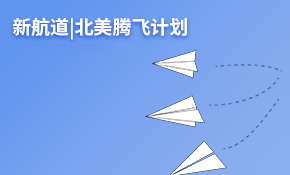雅思阅读真题解析-剑16Test4Passage1-Roman tunnels-简答题
雅思阅读真题解析-剑16Test4Passage1-Roman tunnels-简答题
简答题
Questions 11-13
Answer the questions below.
Choose NO MORE THAN TWO WORDSfrom the passage for each answer.
Write your answers in boxes 11-13 on your answer sheet.
Q7
What type of mineral were the Dolaucothi mines in Wales built to extract?
分析
题干中可以划定位词的与mineral,Dolaucothi mines和Wales。题目问的是what type of mineral, 所以答案是mineral 的具体内容。
定位
4The Romans dug tunnels for their roads using the counter-excavation method, whenever they encountered obstacles such as hills or mountains that were too high for roads to pass over. An example is the 37-meter-long, 6-meter-high, Furlo Pass Tunnel built in Italy in 69-79 CE. Remarkably, a modern road still uses this tunnel today. Tunnels were also built for mineral extraction. Miners would locate a mineral vein and then pursue it with shafts and tunnels underground. Traces of such tunnels used to mine gold can still be found at the Dolaucothi mines in Wales. When the sole purpose of a tunnel was mineral extraction, construction required less planning, as the tunnel route was determined by the mineral vein.
答案
上文倒数第二句出现了Dolaucothi mines和Whales,这句中的used to mine【开采】对应题干中的extract,所以紧跟其后的gold是正确答案。
Q8
In addition to the patron, whose name might be carved onto a tunnel?
分析
题干中可以划定位词的有patron和name。题目问的是whose name,所以答案是表示人的身份的词,可能以-er, -or, -ist, -ian结尾的。题干中的in addition to【除了...还有...】在原文中对应并列结构。
定位
5...When the rock was hard, the Romans employed a technique called fire quenching which consisted of heating the rock with fire, and then suddenly cooling it with cold water so that it would crack. Progress through hard rock could be very slow, and it was not uncommon for tunnels to take years, if not decades, to be built. Construction marks left on a Roman tunnel in Bologna show that the rate of advance through solid rock was 30 centimeters per day. In contrast, the rate of advance of the Claudius tunnel can be calculated at 1.4 meters per day. Most tunnels had inscriptions showing the names of patrons who ordered construction and sometimes the name of the architect. For example, the 1.4-kilometer Qevlik tunnel in Turkey, built to divert the floodwater threatening the harbor of the ancient city of Seleuceia Pieria, had inscriptions on the entrance, still visible today, that also indicate that the tunnel was started in 69 CE and was completed in 81 CE.
答案
上文倒数第二句出现了names of patrons, 这句中的and sometimes对应题干中的in addition to, 所以后半句中表示身份的名词是architect【建筑师】。
Q9
What part of Seleuceia Pieria was the Qevlik tunnel built to protect?
分析
题干中可以划定位词的有Seleuceia Pieria和Qevlik tunnel,题目问的是what part of Seleuceia Pieria, 所以答案必须跟Seleuceia Pieria挨着。
定位
5...When the rock was hard, the Romans employed a technique called fire quenching which consisted of heating the rock with fire, and then suddenly cooling it with cold water so that it would crack. Progress through hard rock could be very slow, and it was not uncommon for tunnels to take years, if not decades, to be built. Construction marks left on a Roman tunnel in Bologna show that the rate of advance through solid rock was 30 centimeters per day. In contrast, the rate of advance of the Claudius tunnel can be calculated at 1.4 meters per day. Most tunnels had inscriptions showing the names of patrons who ordered construction and sometimes the name of the architect. For example, the 1.4-kilometer Qevlik tunnel in Turkey, built to divert the floodwater threatening the harbor of the ancient city of Seleuceia Pieria, had inscriptions on the entrance, still visible today, that also indicate that the tunnel was started in 69 CE and was completed in 81 CE.
答案
上文最后一句出现了Qevlik tunnel和Seleuceia Pieria,跟Seleuceia Pieria紧挨着的名词是harbor和ancient city of,但这里的ancient city 就是指这个Seleuceia Pieria,所以答案是harbor。
分享:新航道雅思















